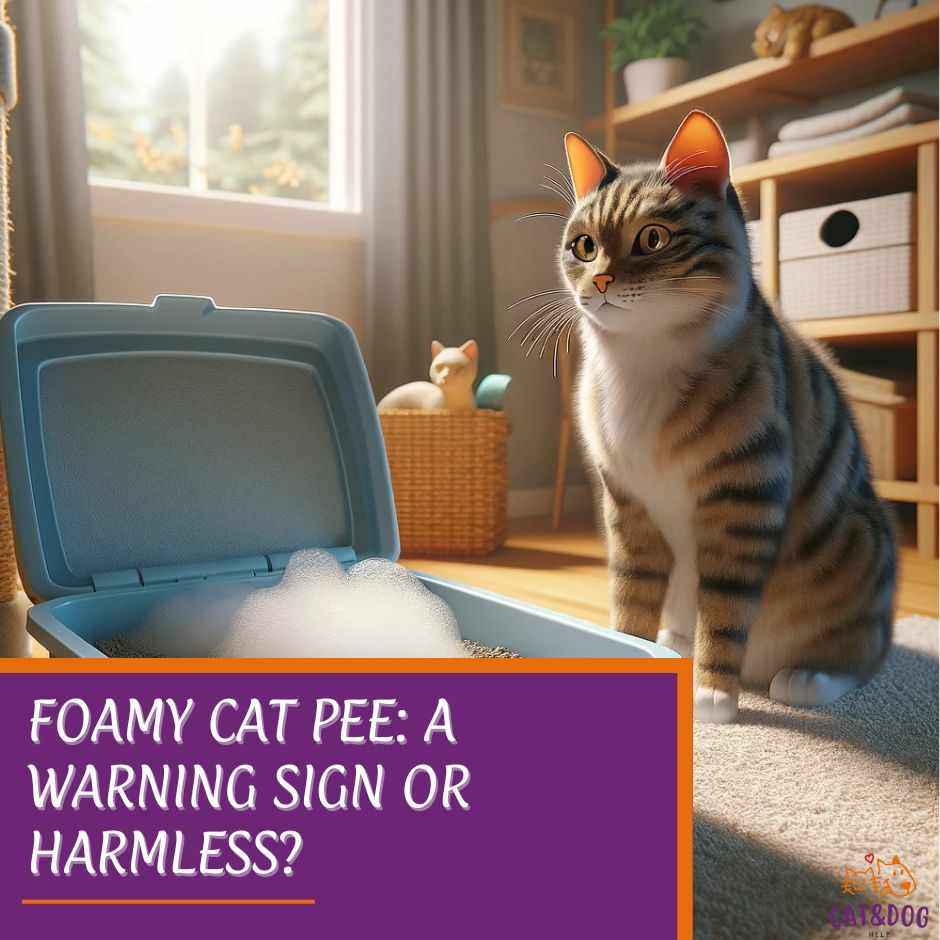Noticed something different about your cat’s litter box lately? If you’ve spotted your fluffy companion’s urine looking a little bubbly, don’t brush it off.
Foamy cat pee, also known as cat’s urine, isn’t just a quirky anomaly; it’s a sign of a feline protein urinary tract infection (FIPUTI) and a potential sign of inflammation of the bladder, also known as Feline Idiopathic Cystitis (FIC). (1)
This inflammation can irritate the lining of the bladder and urethra, potentially leading to changes in urine appearance, including foamy or cloudy urine.
In addition, the presence of blood in your cat’s urine often causes foaminess, which can be one of the clinical signs of disease.
Not only urine but if other parts of the body are bleeding and give off suspicious signs, you should be concerned about this and seek help.
Becoming a super-sleuth to decode your cat’s health clues is part of the pet owner package, and foamy urine could be the first hint in a larger mystery to solve.

Understanding why your cat’s pee might be frothing over can be crucial.
It’s your job to keep an extra eye on these changes since they can be the early warnings of health issues that range from mild to serious, including chronic kidney disease and kidney failure, FIV (feline immunodeficiency virus), liver problems, and feline foamy virus (FFV). (2)
FFV is a retrovirus that infects domestic cats and can have a relatively benign impact. We’ll walk through the maze of causes, pour over the ways to figure out what’s up, and share the steps for treatment and management, including various treatment options. (3)
Just like putting together a puzzle, we’ll give you the pieces you need to complete the picture of feline urinary health and determine the underlying cause of your cat’s foamy urine.
Key Takeaways
- Foamy cat urine is a signal for possible health issues, ranging from mild dehydration to serious medical conditions.
- Identifying changes in your cat’s urine can be crucial for early detection and treatment of potential illnesses.
- Effective management of feline urinary health includes diagnosis, timely treatment, and preventive care.
Recognizing Foamy Cat Pee

Foamy urine is not just quirky behavior; it could sign something more significant.
What Does Foamy Urine Look Like? Foamy cat urine can be quite noticeable. Unlike typical cat urine, which is usually clear and has a consistent fluidity, foamy urine appears bubbly and may even seem thicker.
It could range in color, but its defining feature is those telltale bubbles that persist after your cat leaves the box.
Consistency and Frequency:
- Normal urine: Clear and fluid.
- Foamy urine: Bubbly, possibly thicker, noticeable froth.
Foamy urine may occur occasionally or could become a regular occurrence. If you see it more than once, it’s time to pay closer attention.
Monitoring Techniques at Home
Keeping tabs on your cat’s bathroom habit is important for their health. Here’s how you can be a super sleuth about it:
- Litter Box Checks: Make a habit of checking the litter box after your cat uses it. This way, you’ll spot any changes early.
- Note-taking: Jot down any differences, especially if the foaminess appears regularly.
- Hydration Watch: Ensure there’s always fresh water available, as dehydration can lead to changes in urine. (4)
Understanding the causes of feline foamy urine is crucial, as it not only helps in addressing the immediate issue but also in mitigating potential cat health risks associated with underlying conditions.
Implementing a balanced approach to cat hydration and diet is fundamental in preventing foamy urine, ensuring your cat receives the right mix of nutrients and adequate water intake to support urinary health.
Remember, while it’s good to keep an eye out, always reach out to your vet if anything seems off. They’re the pros and can give the best advice for your furry pal’s health!
Causes of Feline Foamy Urine
Medical Causes
Urinary Tract Infections (UTIs): It’s much like when you feel that burning sensation and constantly rush to the bathroom. (5)
For cats, a UTI might result in foamy urine because the infection causes inflammation, leading to extra proteins in the urine. Look out for frequent toilet visits and discomfort during urination.
Urinary Tract Stones: Just as it sounds—ouch! These stones form from minerals in the urine and can irritate, causing foam. (6)
Apart from foamy urine, your furry pal might also have blood in their pee or strain while doing their business.
Feline Idiopathic Cystitis (FIC): This one is a bit mysterious—’idiopathic’ means there’s no clear cause. However, we do know that stress plays a big role. FIC can result in foamy urine due to bladder inflammation. (7)
Proteinuria: Sometimes, it’s a sign of too much protein being spilled into the urine, which can bubble up to the foamy surface.
Proteinuria could indicate more serious underlying conditions, so it’s something to check out.
Lifestyle and Environmental Causes
Dietary Influences: Have you switched up your kitty’s food lately? Sometimes, what they eat can directly affect their urine. Ingredients that lead to more acidic or concentrated pee can cause foaminess.
Stress-Related Factors: Yes, cats get stressed too! Changes in their environment, like moving houses or a new pet joining the family, can lead to stress-induced urinary issues, including—you guessed it—foamy urine.
In addition to addressing the causes behind foamy cat pee, implementing effective cat hydration tips is essential for maintaining your cat’s urinary health and preventing future urinary tract issues.
Remember, keep an eye out for any changes in your cat’s litter box and consult your vet if you’re concerned. After all, you know your cat best!
Detection Methods

Urinalysis and blood tests are akin to the Sherlock Holmes of the vet world, solving the mystery of your cat’s health.
Each clue from these tests sheds light on what’s happening inside.
Urinalysis, the unsung hero of vet diagnostics, uncovers a lot about your cat’s urinary tract health. It checks for:
- Protein levels: A high count could wave a red flag for infections.
- pH balance: A pee’s acidity or alkalinity might indicate stones or infections.
- Presence of blood or bacteria: These are tell-tale signs of an infection.
Blood tests, on the other hand, give the broader picture of your cat’s overall health, looking at:
- Kidney function: Ensuring those bean-shaped organs are doing their job.
- Electrolyte status: Essential for a well-hydrated and happy cat.
- Blood cell counts: Because you want all soldiers ready in case of an infection.
Now, how about some DIY monitoring at home? Here’s how you can be Dr. Doolittle and interpret your cat’s urinary signs:
- Observe the litter box habits: Increased visits could signal an issue.
- Note the color and consistency: Is the pee more cappuccino than clear water?
- Smell: If it’s stronger than usual, jot it down.
- Behavior changes: More grumpy or meowing than usual?
Keep a log, and if you notice anything unusual, share it with your vet. It’s like giving them a roadmap to your cat’s health. Remember, you’re the Watson to your vet’s Holmes, and every clue counts.
Your vigilant watch and detailed notes combined with your vet’s expertise can ensure that foamy pee is just a bump in the road to your cat’s happy, healthy life.
Treatment and Management
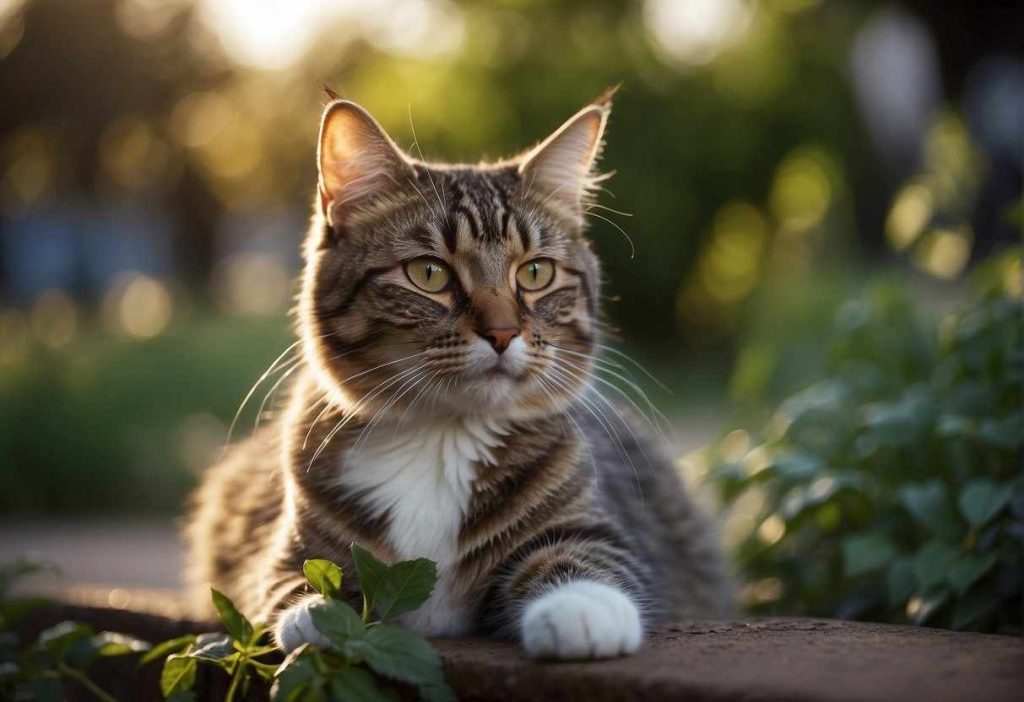
Well, let’s talk about how to tackle this and keep your feline friend happy and healthy.
Medical Treatments:
- Feline Urinary Tract Infection (UTI):
- Medications: Antibiotics are the go-to here to zap those pesky bacteria.
- Diet: Moisture-rich canned food can help flush out their system. Your vet might also recommend a special urinary diet.
- Dehydration:
- Fluid Therapy: This might be necessary if your kitty is severely dehydrated.
- Diet Adaptation: Always ensure there’s fresh water available. Some cats love a water fountain!
Always check with your vet for the best treatment plan – they’ll steer you in the right direction.
Home Care Tips:
- Reducing Stress:
- Comfortable Space: A cozy bed and a quiet corner can make all the difference.
- Playtime: Keep stress at bay by engaging your kitty in regular play.
- Dietary Habits:
- Hydration: As we said, fresh water is key. Maybe jazz it up with a little chicken broth.
- Balanced Diet: Feed high-quality, balanced meals suited to your cat’s needs.
By tuning into your cat’s needs with these simple steps, you can manage and treat conditions associated with foamy urine.
Remember, maintaining a stress-free environment and proper nutrition are golden rules for a happy, healthy cat. Keep up the great work!
Additional vitamin supplements will also have a big impact on their health.
Preventive Strategies
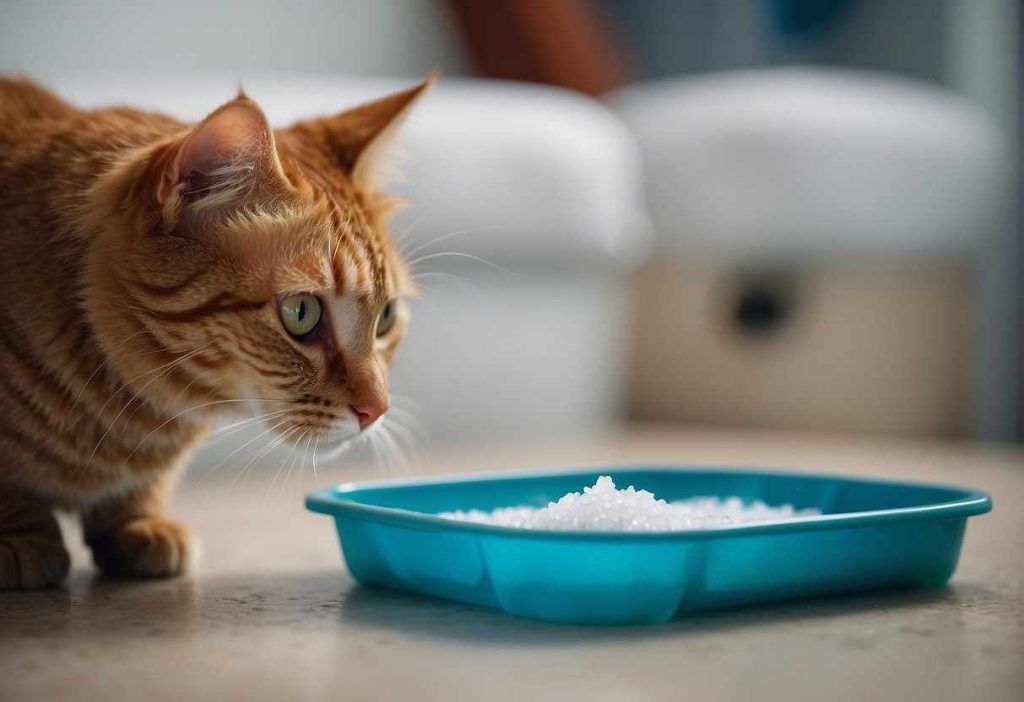
Well, it’s not just about responding when issues pop up; prevention is key!
Diet and Hydration:
First things first: what’s on the menu for your kitty matters. A balanced diet supports a healthy urinary tract. So, you might ask, “What should I be feeding my cat?”
Look for foods specially formulated to maintain urinary health with the right balance of minerals.
Water, water, and more water! Keeping your cat well-hydrated is like giving a shield to their urinary system. Now, we all know some cats treat their water bowl like decorations. To get your cat to drink more:
- Use multiple water stations around the house.
- Offer wet food incorporating more moisture into their diet.
- Consider a cat water fountain to entice those who prefer running water.
Regular Veterinary Check-ups:
Here’s a golden nugget for you: regular vet visits. They’re not just for when your cat masters the dramatic art of pretending to be sick the second you plan a vacation.
Routine check-ups can catch issues before they foam up—pun intended.
Check-up Essentials:
- Ask your vet about urinary health screenings.
- Keep an eye on your cat’s bathroom habits; changes in frequency or appearance can be telling.
- Report any foamy discoveries immediately.
Remember, your cat relies on you to lead the charge in their health. A close eye, good food, enough water, and regular vet trips keep the urinary woes away.
Stay vigilant, stay proactive, and here’s to the health of your whiskered companion! 🐾
Long-Term Management
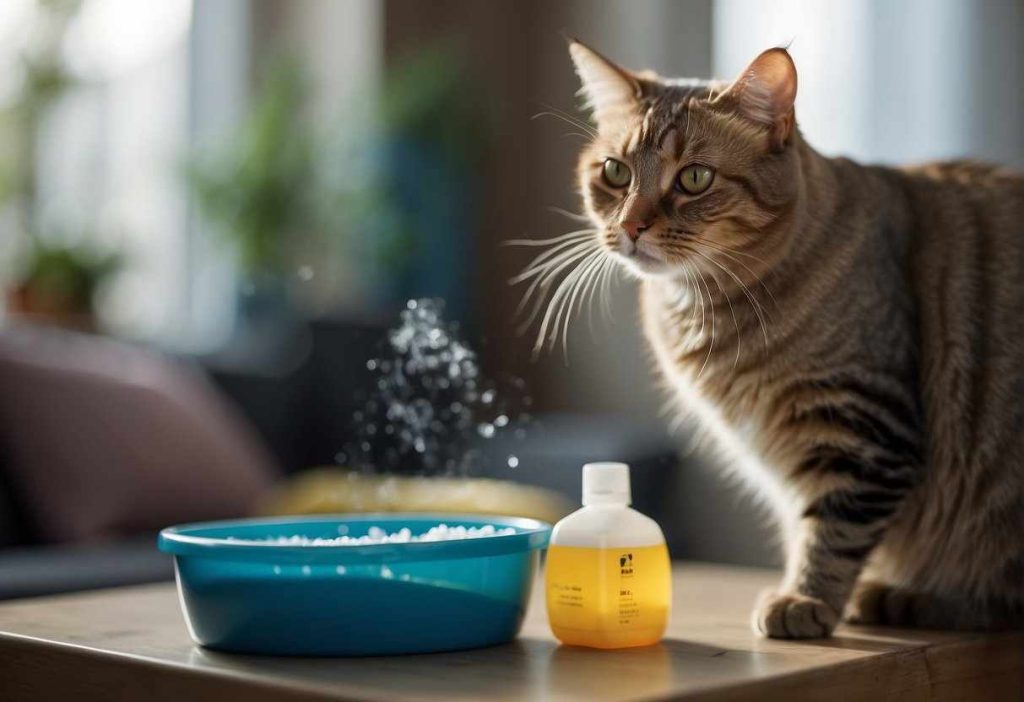
Let’s talk about keeping your cat healthy in the long haul with conditions that can cause foamy urine.
Chronic Conditions: If your vet has diagnosed a chronic condition like kidney disease or a urinary tract infection, management is key. Remember, your cat’s diet is pivotal.
- Diet: Consider therapeutic diets formulated for kidney support that may help reduce protein in the urine.
- Hydration: Cats aren’t big on water, are they? Make water appealing by using fountains or providing multiple water bowls.
- Regular Vet Visits: Just like how you’d keep up with your own check-ups, ensure your cat gets their routine health evaluations.
Medications: If prescribed, administer any medications as directed. It’s not always easy — cats can be finicky — but it’s important for their health.
Daily Monitoring: Keep an eye on your cat’s litter box habits. Changes in the frequency or appearance of urine can be the first sign of trouble.
Remember:
- Medication: Keep a log of dosages and times.
- Diet: journal your cat’s eating habits.
- Vet Visits: Track appointments and check-ups.
Exercise: A healthy weight can reduce the strain on your cat’s kidneys. Encourage play and activity.
By following this advice, you’re on track to giving your cat the loving care they need. It’s all about keeping them comfortable and managing their condition efficiently.
Let’s give our feline friends the happy, purr-filled life they deserve!
Real-life Examples and Case Studies
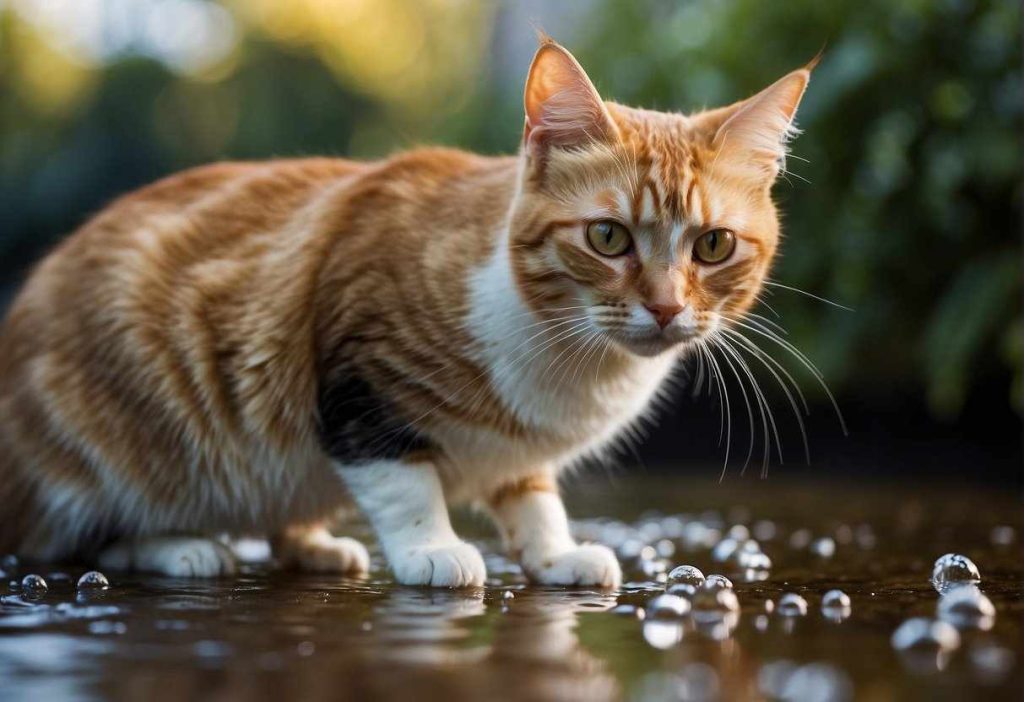
Meet Olivia and Whiskers: Olivia noticed that Whiskers’ urine was foamy one morning.
Concerned, she consulted her vet and learned that Whiskers was slightly dehydrated. With increased water intake and a switch to a wet food diet, the foaminess disappeared.
The Case of Shadow: Imagine going through a similar scare. A cat owner shared that their cat Shadow had foamy urine coupled with an increased frequency of visiting the litter box.
A trip to the vet revealed a mild urinary tract infection (UTI). After a course of antibiotics, Shadow’s foamy urine was resolved and he was back to his happy, healthy self.
The obstruction caused by the urinary stones was no longer causing discomfort in Shadow’s cat’s body, specifically in his urinary tract.
- Veterinarian Insights: A chat with Dr. Meow, a leading feline specialist, sheds light on the issue. “Foamy urine can be due to protein content,” she explains, “but it’s not always a cause for panic. If it’s a one-off and there are no other symptoms, keep an eye on it. However, persistent foam might warrant a visit to the clinic.”
Here’s how you can relate it to your kitty’s health:
- Monitor your cat’s water intake.
- Observe any changes in behavior or peeing patterns.
- If the foam persists, consult your vet.
Remember, you know your cat best! Stay attentive to their habits and health, and when in doubt, seek professional advice.
Foamy feline pee is puzzling, but it’s not necessarily a catastrophe in a cat’s litter box. Armed with the right information, you and your furry friend can get through it pawsitively!
Interactive Resources
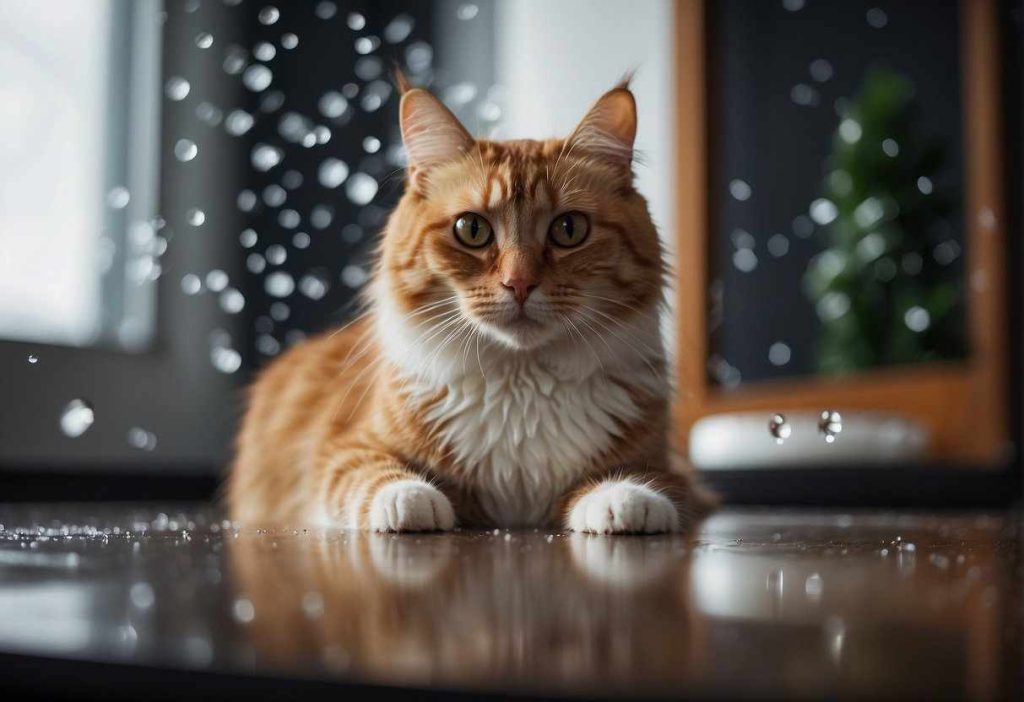
Quick Quizzes: Fancy a quick check-up from the comfort of your couch? Online quizzes can help you gauge whether your cat’s symptoms are a sign to dash to the vet.
These quizzes will ask you about your cat’s behaviors, pee patterns, and other symptoms.
- Symptom Checker Tools: If Mr. Whiskers’s litter box presents foamy urine, using an online symptom checker can pinpoint possible issues. You’ll input symptoms, and the tool offers possible explanations. Remember, these tools complement—but never replace—professional advice.
Interactive Guides:
- Step 1: Observation. Keep an eye on the frequency of your cat’s bathroom breaks.
- Step 2: Note changes. Is there foam? Any other unusual signs?
- Step 3: Use interactive guides to understand what you’re seeing. These guides can break down symptoms into digestible snippets.
| Symptom | Possible Cause | Action Item |
| Foamy Urine | Dehydration or UTI | Collect samples, schedule vet visit |
| Frequent Urination | Stress or Kidney Issues | Watch closely, and call the vet if continues |
| Changes in Color | Varies, could signal infection | Collect sample, schedule vet visit |
Remember, you know your cat best! If you’re sensing that it’s more than an off day, don’t hesitate to seek professional advice.
A check-up may just give you peace of mind—or catch something early enough to treat easily.
Keep things light, cat crusaders: the goal is to enjoy every purr-filled moment with your older cat without the shadow of internal problems or health concerns.
And always, if your cat is displaying signs of illness, be sure to see a veterinarian regarding your cat’s condition, as it could be the result of a wide variety of problems that are impossible to diagnose without an experienced professional’s help.
Your vet’s expertise is the beacon we’re all following! Remember, this is especially important for older cats, as they may have different health needs than younger cats.
So, make sure to monitor your male cat’s overall health and seek professional advice if you notice any concerning symptoms.
Quick Recap
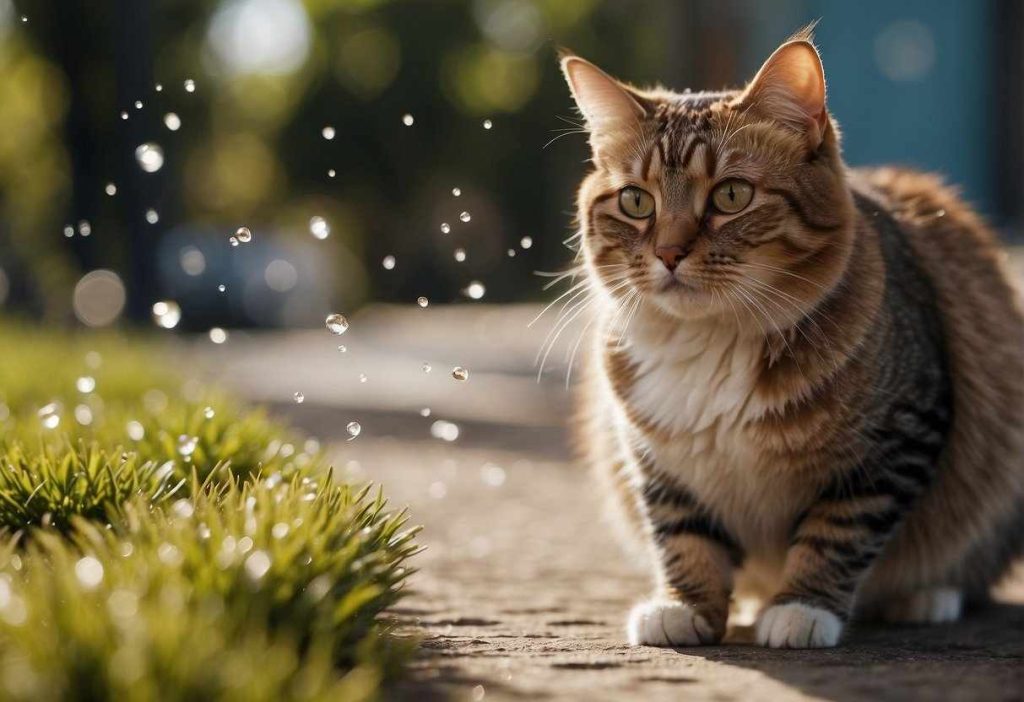
Have you spotted your cat’s urine turning foamy? This can be a puzzle, huh? Let’s break it down simply.
A foamy urine could wave a flag for various health issues—some serious, others not as much. Here’s a rapid rundown of what you should keep your eyes peeled for:
- Dehydration: This is a biggie. Cats can get dehydrated just like us, leading to that frothy pee. Be watchful for other signs like less bouncy skin, fatigue, and an under-the-weather appetite.
- Urinary Tract Infections (UTI): Yep, these nasties can make cat urine go foamy, accompanied by more frequent pit stops to the litter box.
- Kidney Concerns: When kidneys get cranky, they might churn out foam. It’s their way of saying, “Check me out!”
Here’s a quick look-see at the possible reasons for a foamy feline pee:
- Dehydration
- Physical stress
- UTIs
- Kidney issues
What’s the game plan? Should you run to the vet with a sample of foamy pee in hand?
Well, it’s worth a vet check if you notice any out-of-the-ordinary behavior or changes in your cat’s bathroom habits, including vomiting. Responsible pet parenting means keeping tabs on these little clues.
Your furry friend counts on you to decode these signs since they can’t speak ‘human’—yet! So, keep the water bowl full, the cuddles coming, and your eyes on the litter box. Your cat will love you for it!
Also, pay attention to their overall behavior and any changes in their eating or sleeping habits, specifically the type of cat food they consume, as well as regular veterinary care with annual lab work and urinalysis, including a serum biochemistry profile and complete blood count.
These can be signs of underlying health issues and it’s important to catch them early.
Frequently Asked Questions
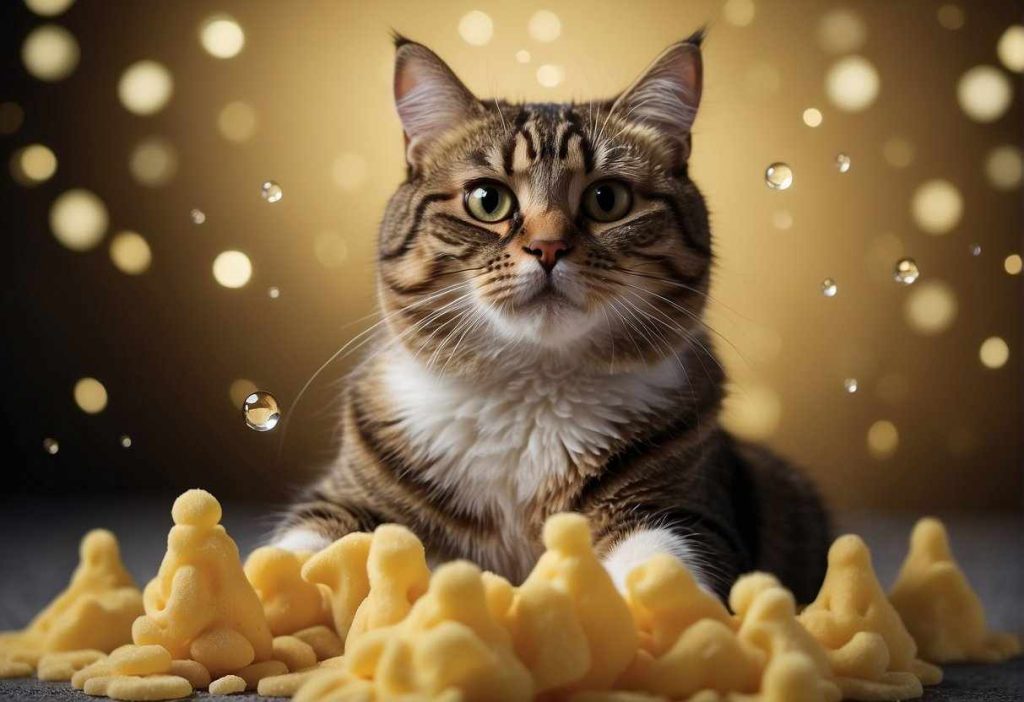
When it comes to your feline friend’s health, you might find that their bathroom habits offer some critical insights.
Let’s navigate through some of the common queries you might have if you come across foamy urine in your cat’s litter box.
What does it mean if my cat’s urine is foamy?
A foamy urine could be your cat’s way of waving a little red flag regarding their health.
It often indicates an abnormality, possibly in the bladder or kidneys, that may need a vet’s attention.
How can I tell if my cat’s foamy urine is a serious concern?
If the foam in your cat’s urine is accompanied by other signs, such as lethargy, decreased appetite, or increased frequency of urination, it’s time to get them checked out by a professional.
What are the common causes of foamy cat urine?
Dehydration, urinary tract infections, and kidney issues are usual suspects behind foamy urine.
Less drinky, more think – if your cat isn’t hydrated, it might lead to foamy trouble.
Can diet influence my cat’s urine to become foamy?
Indeed, your cat’s menu does matter. Certain foods may lead to dehydration or affect kidney function, both of which can alter the appearance of their urine.
It’s all about balance in that bowl.
What should I do if I notice my cat has foamy urine?
Keep calm and consult your vet. They’ll likely recommend tests to get to the root of the problem and suggest the best course of action.
You’re the best advocate for your kitty’s health!
Are there specific treatments for foamy urine in cats?
Treatment depends on the cause. It could range from increasing water intake for dehydration to antibiotics for a urinary tract infection.
Your vet’s wisdom is the key here.
How can I prevent my cat from developing foamy urine in the future?
Prevention is a blend of regular vet check-ups, keeping your cat hydrated, and a balanced diet. And, of course, keeping a watchful eye on any changes in the litter box.
- The Ultimate Overview to Actual Cash Gambling Establishments - July 1, 2025

